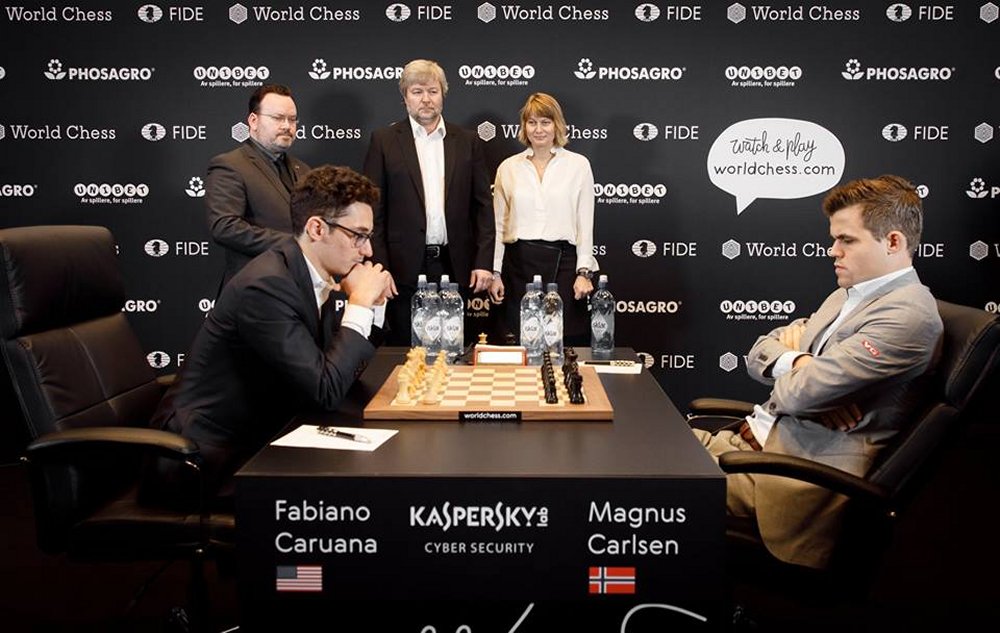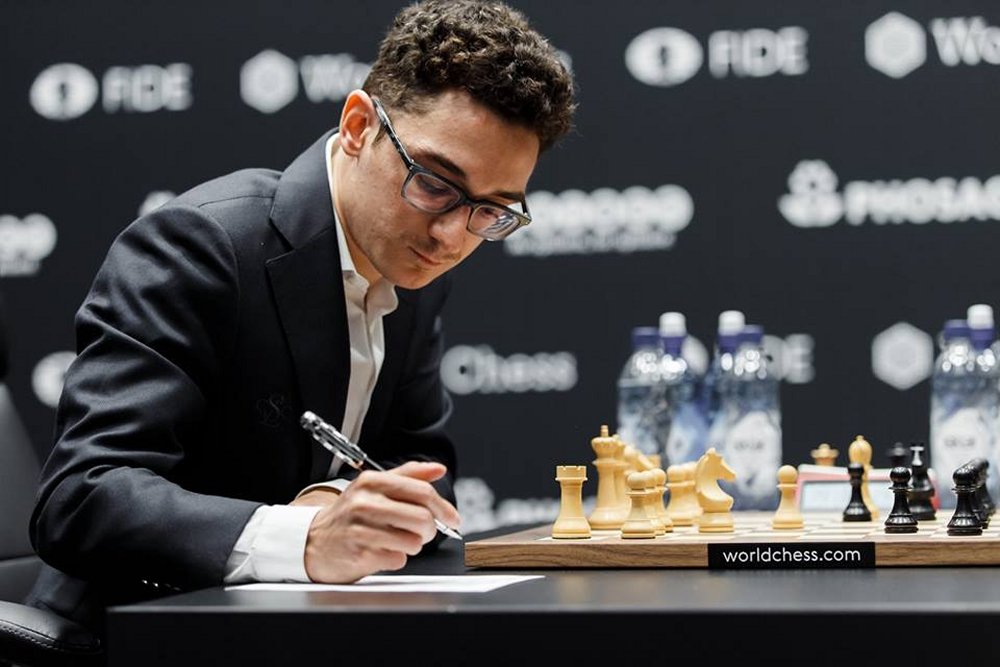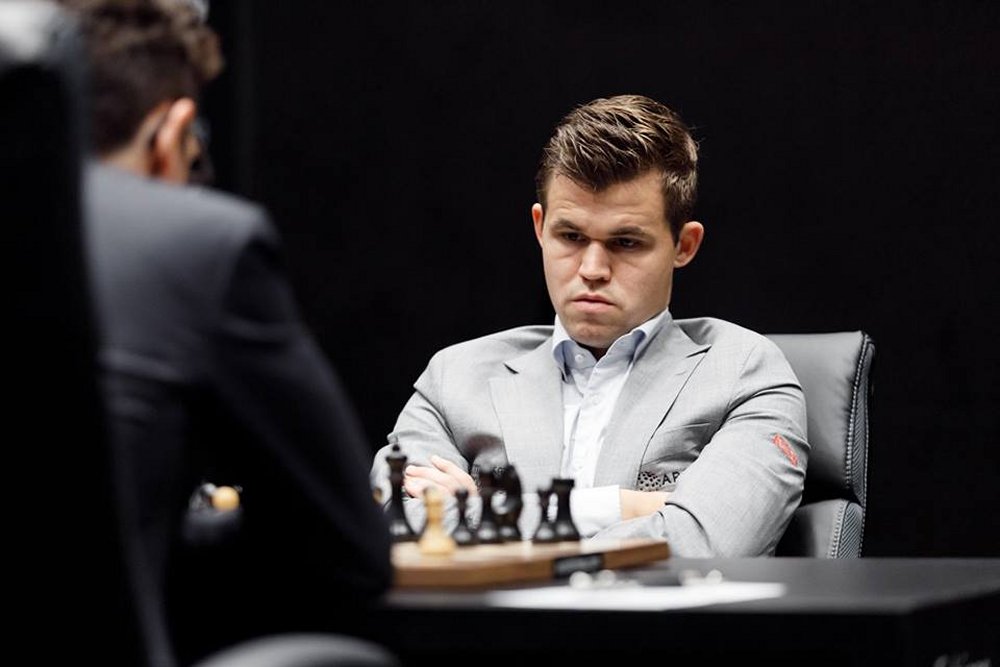


In advance of Game 3, a thunderstorm moved through central London, dumping rain and making quite a racket. But the weather proved not to presage any evident storms on the board.
Caruana showed he wasn’t averse to going for 1.e4 again and Carlsen was equally principled in following the script of Game 1 as well, by playing 1…c5 and 2.Nc6 inviting a repeat of the Rossolimo: 3.Bb5 g6 4.Bxc6 dxc6 5.d3 Bg7.
But unlike in the first match game, and the predecessor game between the two players from 2015, Fabiano opted to hold back his h3 pawn on his sixth move and instead castled 6.O-O. Magnus quickly played 6...Qc7, a rare sideline not seen before at the GM level.
"I played [7.]Re1 because looked logical and it felt like a few moves later I have a very pleasant position", said the Challenger after the game. "I just made one really bad move when I played [15.]Bd2.

Caruana has settled into the match, but winning chances are elusive | Photo: Nikolai Dunaevsky / World Chess
I wanted to take [15.Rxa5 Qxa5] play [16.]Bd2 Qc7 is forced, [17.]Qa1 Nd7 [18.]Qa7", he rattled off. "I was going to take on a5 and I thought, 'why not first play Bd2 and get the same position?'”
Caruana called this misstep, "just a bit of a blackout”, but it signalled the moment when he gave his initiative away.
When Magnus was asked whether he was satisfied with the course of the opening he said simply and deliberately, “nope” — sort of popping the 'p' in the process.
For a while, the game looked to be heading for a relatively early draw, but in the endgame, it was Black who could press a bit, as Caruana explained:
“I thought this ending would be equal when I went into it but then I couldn’t really see what to do and I realised I kind of have to sit and wait. I mean it’s very very drawish, it should be a draw in many ways.”
No draws were offered, but the players shook hands after 49 moves and about four hours of play.

ChessBase 15 evaluation profile

Magnus Carlsen says he's "not bored" but that the match is deadlocked | Photo: Nikolai Dunaevsky / World Chess
GM Daniel King takes a closer look at the ending in his daily summary:
Today we have seen yet another Rossolimo Sicilian, where Magnus gradually equalised, and even tried to take over in the endgame. Caruana managed to draw with ease though. I am interested if in case of another 2...Nc6 Sicilian, Caruana will play 3.d4!? Or perhaps he will switch to another opening? The future will tell, but before reaching it, tomorrow he has to defend with Black first.
GM Yannick Pelletier has analysed the first three games
The winner is the first player to 6½ up to a maximum of 12 games.
| Advertising |